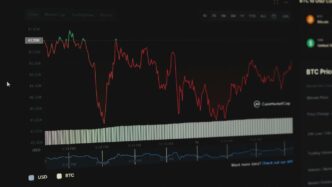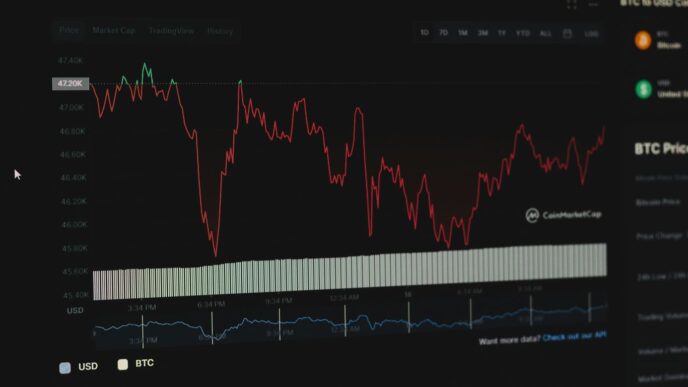There are so many ways to get the news these days, it can be a bit much to keep track of. From the old-school paper you used to get delivered to your doorstep to the quick updates on your phone, the types of news have really spread out. We get news through TV, radio, websites, and even magazines that focus on specific things we like. It’s a whole world of information out there, and understanding the different kinds of news can help you find what you’re looking for.
Key Takeaways
- News comes in different formats like print, broadcast (TV/radio), and online, each with its own way of sharing information.
- Reporting styles vary, including in-depth investigative work, storytelling features, and coverage of politics.
- There are specialized areas like sports journalism and photojournalism that focus on specific subjects.
- Magazines offer broad news overviews or dive deep into niche interests like cooking, tech, or travel.
- Understanding the various types of news helps you find the information that matters most to you.
Understanding Different Types of News Formats
So, you want to know about the different ways news gets to us, huh? It’s not just one big blob of information. Think of it like different tools for different jobs. We’ve got the old reliable, the flashy newcomer, and the one that’s always buzzing. Let’s break it down.
Print Journalism: The Enduring Medium
This is your classic newspaper or magazine, the kind you can hold in your hands. It’s been around forever, and honestly, it’s still got its place. Newspapers, whether daily or weekly, give you the rundown on what’s happening. Magazines often go a bit deeper, focusing on specific topics or offering longer reads. Print journalism has a certain weight to it; there’s a permanence you don’t always get with digital stuff. Even though everything’s online now, many print publications have websites and apps, trying to keep up with the times. It’s a medium that’s had to adapt, but it’s still a go-to for many who like to sit down with a story.
Broadcast Journalism: Engaging Through Audio and Visuals
This is where news gets lively. Think television news channels with their anchors and video clips, or radio stations giving you the latest updates while you’re stuck in traffic. Broadcast journalism uses sound and images to grab your attention. It’s immediate, and it can really make you feel like you’re there. With 24-hour news cycles and streaming options, it’s faster than ever. You get news bulletins, interviews, and sometimes even mini-documentaries all rolled into one package. It’s a dynamic way to get your information, especially when you want to see and hear what’s going on.
Online Journalism: The Digital Frontier
This is the big one these days. Online journalism is all about the internet. News websites, blogs, social media – that’s its home turf. The biggest advantage? Speed and accessibility. You can get news the second it happens, right on your phone or computer. It’s not just articles, either. You’ll find videos, podcasts, and even interactive graphics. Plus, you can usually comment and share, making it a two-way street. It’s changed how we consume news completely, making it super easy to stay updated, but also meaning you have to be a bit more careful about what you trust.
In-Depth News Reporting Styles
Beyond the quick headlines and daily updates, some news reporting goes much deeper. These styles take more time and effort, aiming to really get to the bottom of things or tell a compelling story. It’s not just about what happened, but why it matters and who it affects.
Investigative Journalism: Uncovering Hidden Truths
This is where reporters dig deep, often for months or even years, to expose things that aren’t obvious. Think corruption, scandals, or injustices that powerful people might want to keep quiet. It involves a lot of research, looking through documents, and talking to many people to piece together a hidden story. The goal is to bring important, often uncomfortable, truths to light for the public to see. It’s tough work, requiring a lot of patience and a commitment to finding the facts, no matter how buried they are.
Feature Journalism: Storytelling and Human Interest
Feature stories are less about breaking news and more about telling a narrative. They focus on people, places, or events in a way that’s engaging and often emotional. Instead of just reporting facts, feature writers use storytelling techniques to draw readers in. These articles can cover almost anything, from a day in the life of a unique profession to a historical event seen through the eyes of someone who lived it. They aim to inform, but also to connect with the reader on a more personal level.
Political Journalism: Covering Governance and Policy
This type of reporting keeps an eye on government, politicians, and the laws being made. Political journalists explain what’s happening in city halls, statehouses, and Washington D.C., and how it might affect everyday people. They cover elections, policy debates, and the actions of public officials. It’s a challenging beat, especially when trying to make complex political issues understandable and hold leaders accountable. Staying neutral and presenting facts clearly is super important here, especially when things get heated or complicated.
Specialized News Coverage Areas

Beyond the general news, there are specific areas journalists focus on, each with its own way of telling stories. It’s not all about politics or breaking events; sometimes, the focus is much narrower, catering to particular interests.
Sports Journalism
This is all about the games, the athletes, and the teams we love to follow. Sports journalists cover everything from the big championship games to the smaller local matches. They write game recaps, interview players and coaches, and offer analysis on team performance. It’s a beat that requires a real passion for athletics and a solid grasp of the rules and strategies involved. You’ll find sports news in newspapers, on TV, and all over the internet, often with dedicated websites and blogs for fans.
Photojournalism
Sometimes, a picture really is worth a thousand words. Photojournalism uses still images to tell news stories. Photographers capture moments that convey emotion, highlight key events, or show the impact of a situation. They work under pressure to get the right shot, whether it’s a politician signing a bill or a community reacting to a natural disaster. These images often accompany written articles but can also stand alone to tell a powerful story. It’s a demanding field that requires a good eye and a commitment to showing the truth visually.
Opinion Journalism
This type of journalism is where writers share their personal views on current events. Think of newspaper op-eds or magazine columns. Opinion pieces aren’t just random thoughts; they’re usually well-researched arguments meant to make you think and discuss. They present a specific viewpoint on a topic, backed by facts and reasoning. While they don’t report the news directly, they play a big part in shaping public conversation and understanding different perspectives on important issues.
Exploring Magazine Genres
Magazines are pretty amazing, aren’t they? They’re like little curated worlds you can hold in your hands, each one focused on something specific. It’s not just about news anymore; there’s a whole universe of them out there for just about any interest you can imagine. Seriously, if you’re into something, there’s probably a magazine for it.
Let’s break down some of the main types you’ll find:
General News Magazines: Broad Overviews
These are the ones that try to give you the big picture. Think of magazines like Time or Newsweek. They cover what’s happening in politics, world events, and culture, often with a bit more depth than your daily newspaper. They’re good for getting a solid understanding of major issues without getting bogged down in too much detail. They often have opinion pieces too, so you get different viewpoints.
Niche Interest Magazines: From Cooking to Tech
This is where things get really interesting. You’ve got magazines dedicated to specific hobbies or subjects. For example:
- Cooking: Bon Appétit or Food Network Magazine are packed with recipes, kitchen tips, and food trends. They make you want to get in the kitchen right away.
- Technology: Wired or PCMag keep you up-to-date on the latest gadgets, software, and what’s next in the tech world. It’s a fast-moving field, and these magazines help you keep pace.
- Art: Publications like Artforum showcase visual arts, from painting to photography, featuring artist interviews and exhibition reviews.
Lifestyle and Hobby Magazines: Fashion, Health, and Travel
Then there are magazines that focus on how we live our lives. Fashion magazines like Vogue or Elle are all about trends, style, and beauty. Health magazines, such as Men’s Health or Women’s Health, offer advice on fitness, nutrition, and well-being. And travel magazines, like Travel + Leisure, can transport you to different places with stunning photos and destination guides. These magazines often blend practical advice with aspirational content, making them popular reads for many people.
Diverse Magazine Categories

Beyond the general news and specific hobbies, magazines branch out into some really interesting and specialized areas. It’s pretty wild how many different niches they cover, honestly. You’ve got your business and cultural publications, which are great for keeping up with the economic pulse or understanding different art scenes. Then there are the magazines dedicated to specific hobbies, like pets, sports, or entertainment – think of the latest on your favorite team or the hottest new movie.
Business and Cultural Insights
Magazines focusing on business and culture offer a deep dive into how the world works, both economically and artistically. Business publications often dissect market trends, company strategies, and global economic shifts. They might feature interviews with CEOs or analyses of stock market performance. On the cultural side, these magazines explore literature, film, music, and the arts, often featuring reviews, artist profiles, and essays on societal trends. They help readers understand the broader context of current events and creative movements. For those interested in the intersection of commerce and creativity, publications like The Economist provide a good starting point.
Specialized Hobbies: Pets, Sports, and Entertainment
This is where things get really fun for many people. If you’re passionate about your furry (or scaly, or feathered) friends, there are magazines dedicated entirely to pet care, offering advice on everything from training to health. For sports fans, publications cover specific games, athletes, and leagues, keeping you updated on scores and analysis. And then there’s entertainment – covering movies, TV shows, music, and celebrity news. These magazines are perfect for staying in the loop with your favorite pastimes.
Outdoor and Wildlife Exploration
For the adventurers and nature lovers, a whole category of magazines exists to feed that passion. These publications explore the great outdoors, from hiking and camping tips to in-depth features on wildlife conservation and natural landscapes. They often showcase stunning photography and personal accounts of expeditions. If you’re dreaming of your next trip or just want to learn more about the natural world, magazines like National Geographic can transport you to far-off places and introduce you to fascinating creatures.
Wrapping It Up
So, we’ve looked at a bunch of different ways news gets to us. From the old-school papers and magazines to the fast-paced world of online articles and videos, there’s a lot out there. Whether you’re into deep dives on politics, quick updates on sports, or just want to see what’s new in cooking, there’s a type of news for you. It’s pretty cool how many options there are for staying informed. As things change, the way we get our news will probably keep changing too, but the need to know what’s going on? That’s not going anywhere.
Frequently Asked Questions
What are the main ways news is shared?
News comes in a few main forms. There’s print news like newspapers and magazines that you can hold in your hand. Then there’s broadcast news, which you see on TV or hear on the radio. And nowadays, a lot of news is online, on websites and apps, which you can access instantly on your devices.
What’s the difference between investigative and feature journalism?
Investigative journalism is like being a detective for the news. Reporters dig deep to uncover secrets, like corruption or unfair practices, that people might not want known. Feature journalism is more about telling stories. It focuses on people, interesting events, or topics in a way that’s engaging and often more personal, like a mini-movie or a captivating tale.
Why are there so many different types of magazines?
Magazines are like specialized clubs for readers! They cover everything from what’s happening in the world (news magazines) to how to cook delicious meals, the latest tech gadgets, fashion trends, staying healthy, or even adventures in the wild. Each type focuses on a specific interest so people can find exactly what they want to read about.
What is opinion journalism?
Opinion journalism is where writers share their personal thoughts and beliefs about important topics. They use facts to back up their ideas, but the main goal is to present a certain point of view and get people thinking and talking about the issue.
How does photojournalism work?
Photojournalism is telling a news story using only pictures. Instead of words, powerful photos capture important moments, emotions, or events. These images often appear in newspapers, magazines, or online alongside a few words to give context.
Is political journalism just about politicians?
Political journalism is mainly about how our government works and the decisions leaders make. It covers elections, new laws, and what politicians are doing. The goal is to keep citizens informed about what’s happening in government so they can understand the issues and make smart choices.














